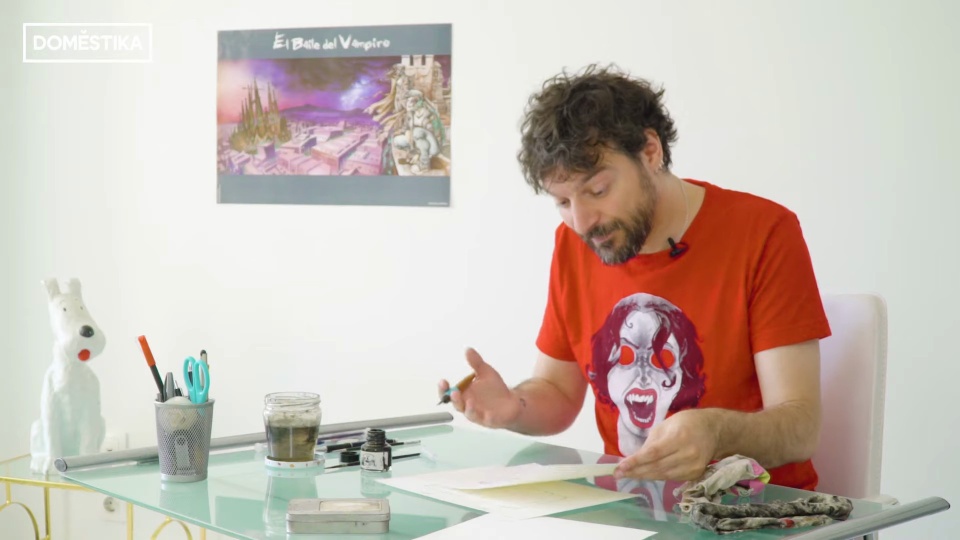Tutorial Illustration: how to draw textures with India ink

Learn with Sergio Bleda how to draw objects with different textures and materials: glass, wood, clay and metal
When inking for comics or illustration in general, it is important to have enough precision to create textures that simulate different materials. This is the only way to achieve illustrations rich in detail, which thanks to their thoroughness will allow us to build a much more realistic and tangible world, and will help the colorist to understand much better what we have tried to achieve.
Below, Sergio Bleda (@sergibleda), cartoonist and illustrator, shows you his tricks to learn how to create four different textures using India ink. All you need is a brush and a nib to get started.
1. Glass
For this example, and for the rest of the materials, the ideal is to use a glass shape, which will allow to appreciate the textures in the best possible way. Bleda recommends using a pen to mark the lines of the glass, because of the precision of this tool.
The simplest of the textures is glass. The first of its characteristics is transparency: when we draw a crystal glass, for example, making its interior visible will make it clear to the viewer what material he or she is looking at. Another feature of glass is its shine, which we can draw by using lines that simulate a reflection.
Once we have the basic details with the pen, we can move on to the brush to give them more volume and expressiveness.

2. Wood
The most usual thing is that wood is thicker than glass, so, following the example of the glass, we will have to take care that its edges are more marked and thicker.
Another logical characteristic of wood is its lack of transparency, so you will not see what it contains inside. Drawing veins will help to better understand the texture, as well as adding patterns that make it clear that it is not a material as smooth as glass.

3. Clay
The first difference with respect to the previous textures is that, following the example of the glass, in this case the edge lines can be more irregular.
We can continue to add some hatching to simulate cracks and imperfections, and move on to the brush to add more thickness and expressiveness.

4. Metal
A metal glass would have a certain resemblance to glass but it would not be transparent. In any case, as we did with that one, we will apply shines but adapted to the characteristics of this material: we can use a brush to blur the reflection more..

If you liked this lesson, remember that you can explore all the technical and creative possibilities of professional inking in Sergio Bleda's online course 'Inking techniques for comics and illustration':
You may be interested in
- Introduction to Chinese ink illustration, a course by Hilda Palafox.
- Illustration with painting and mixed media, a course by Jesús Benítez (Dhear).
- Pencil drawing for superhero comics, a course by Salva Espín.
- Graphic humor for beginners, a course by Raúl Salazar.






0 comments